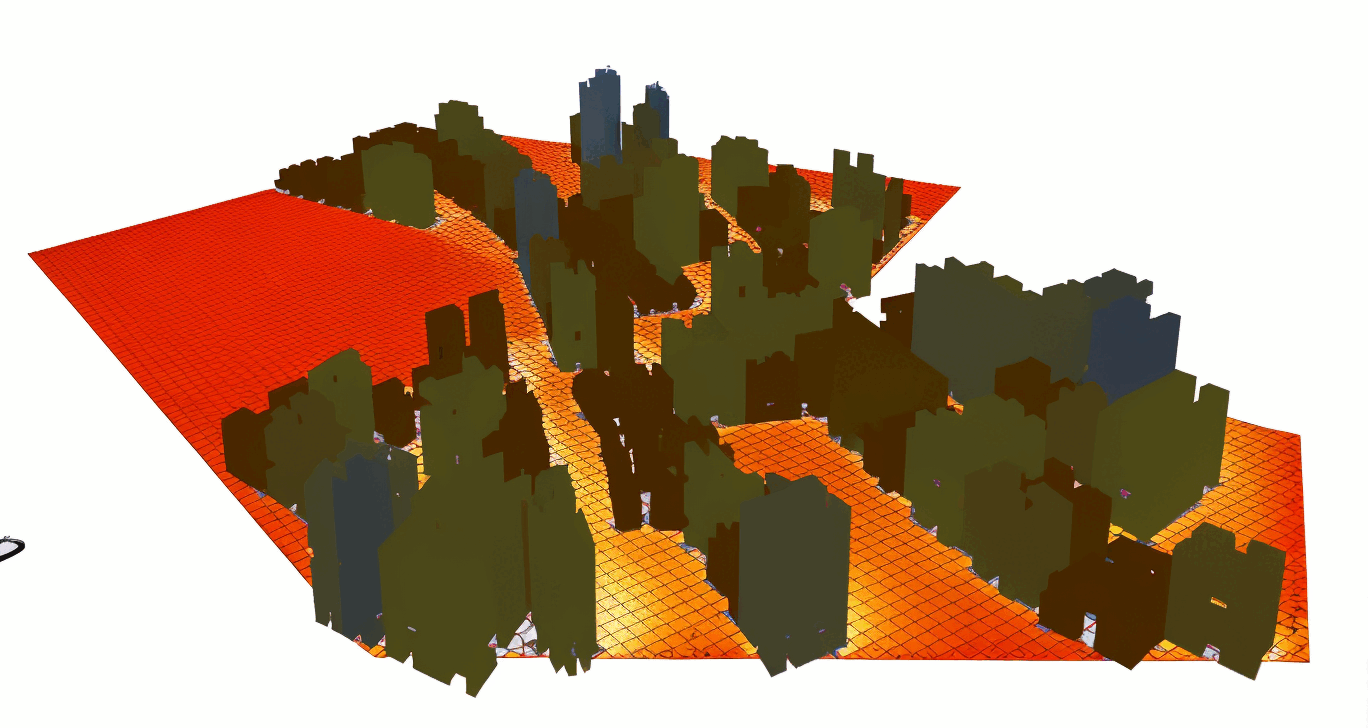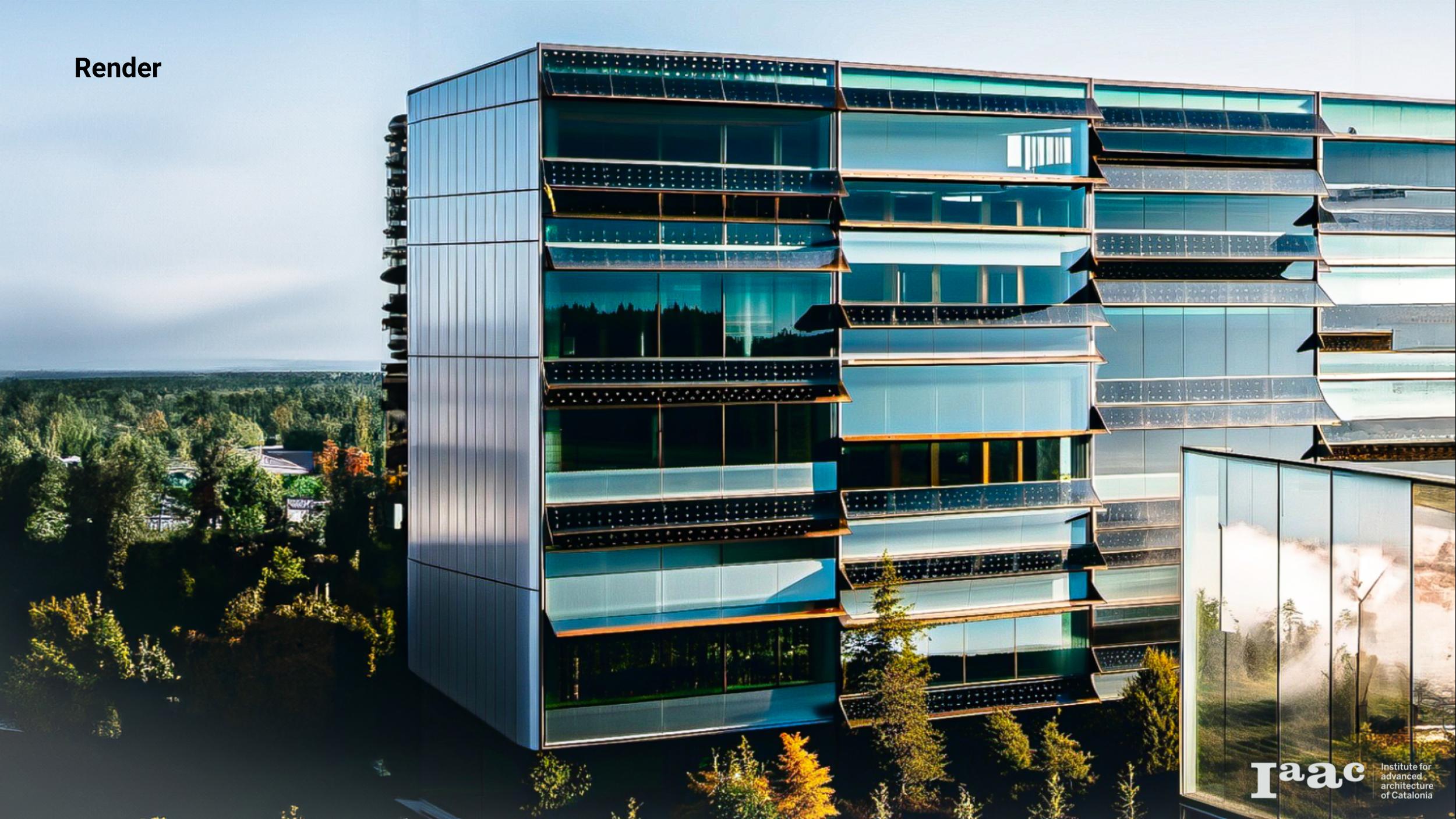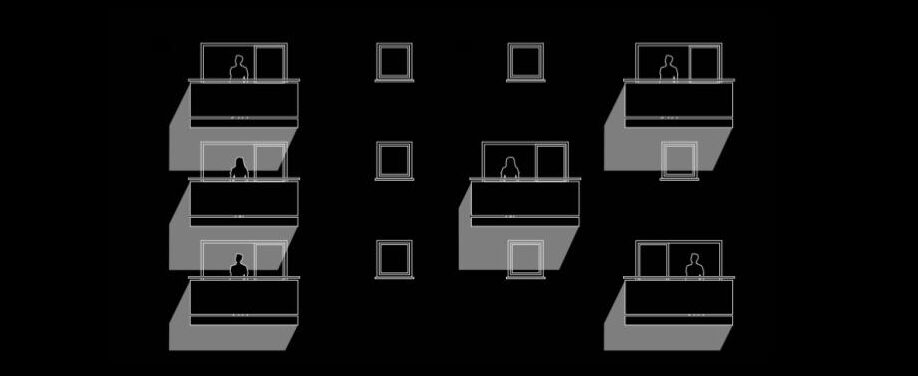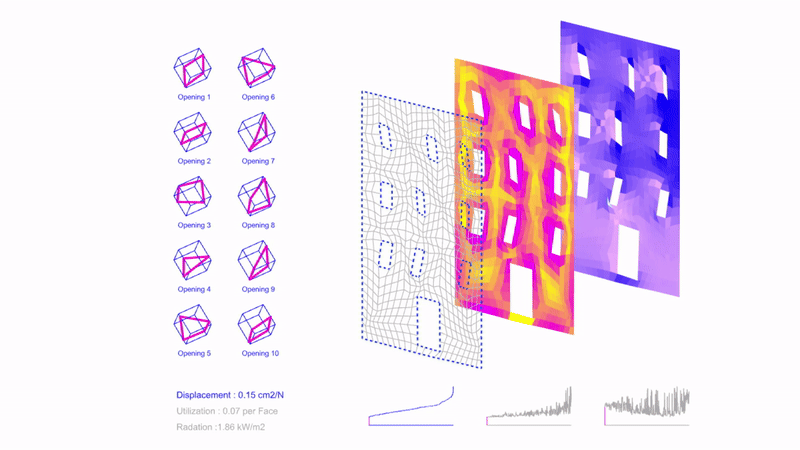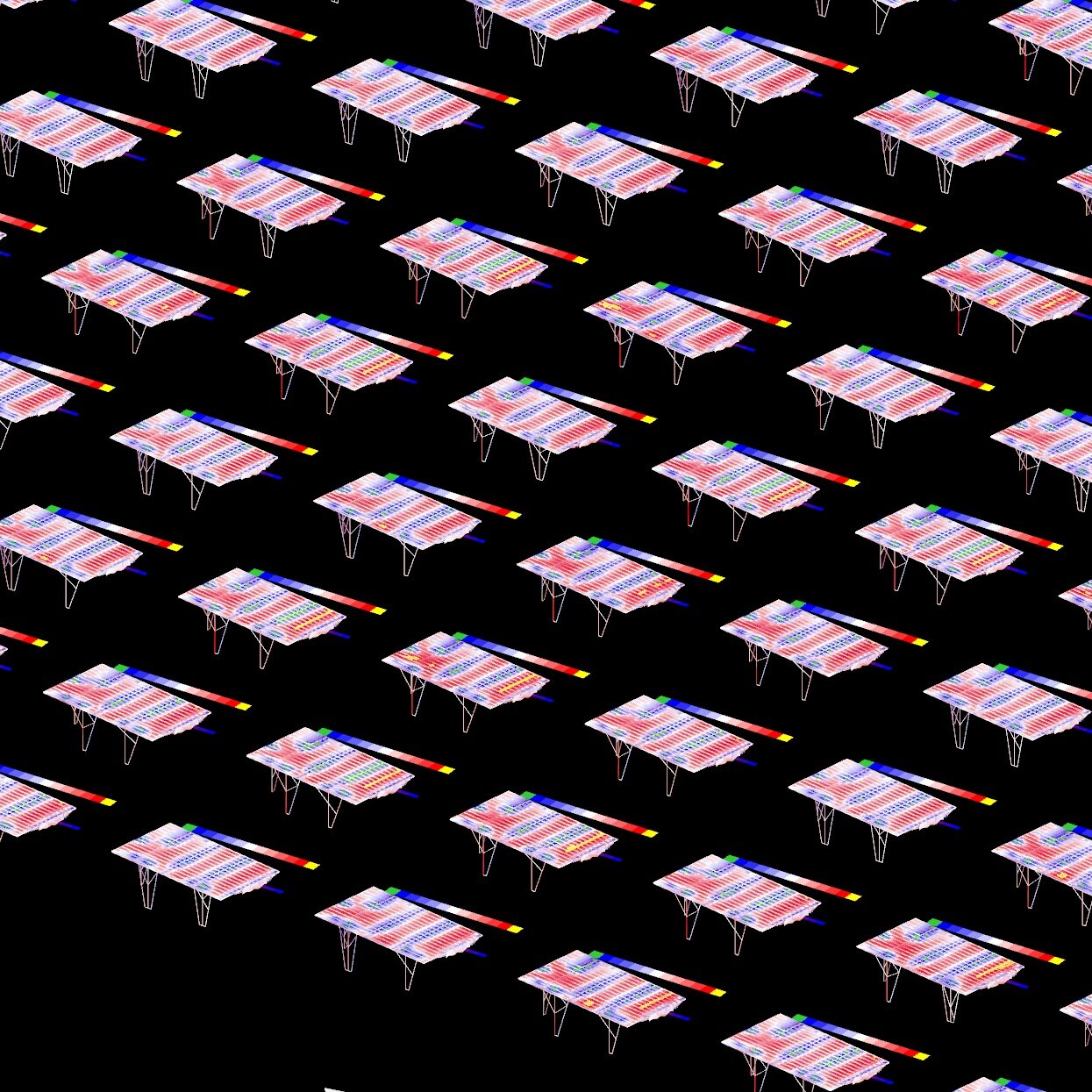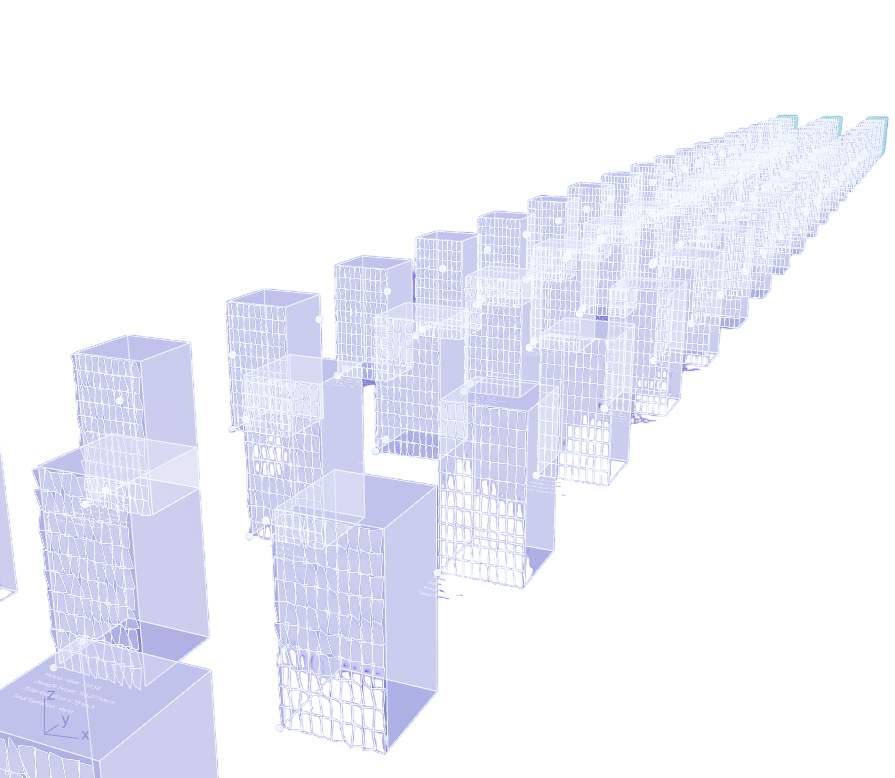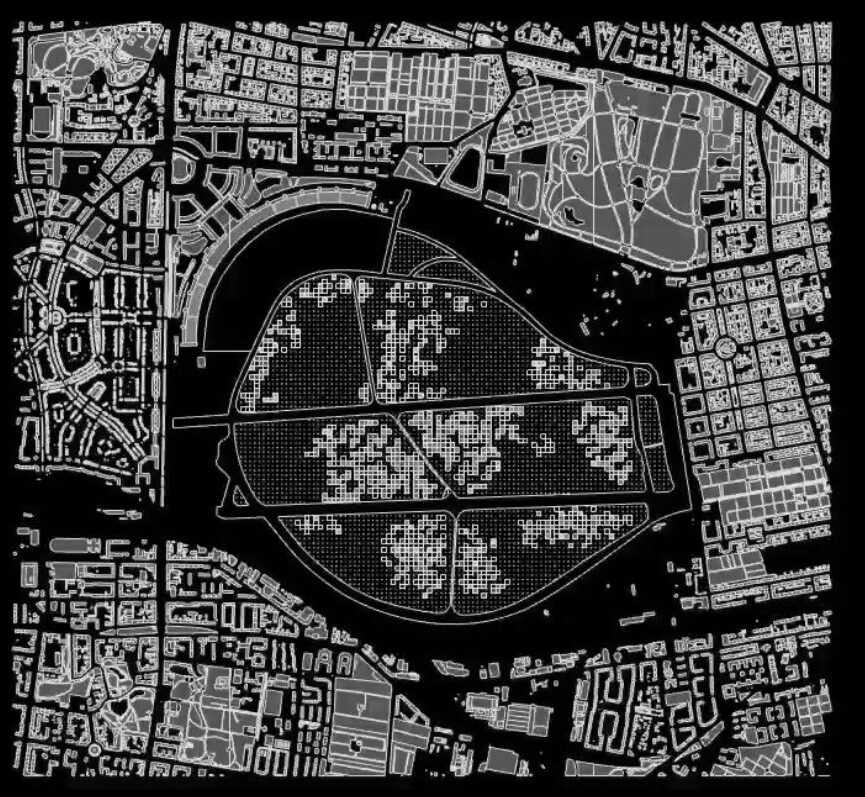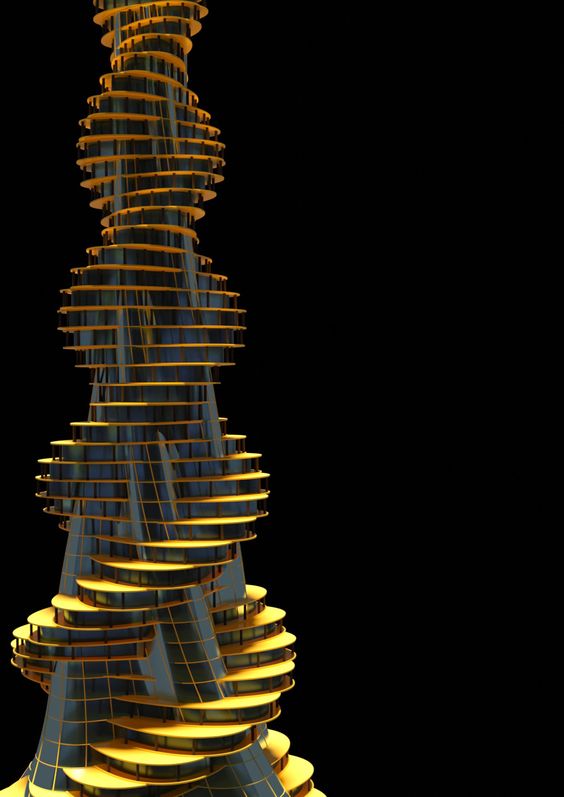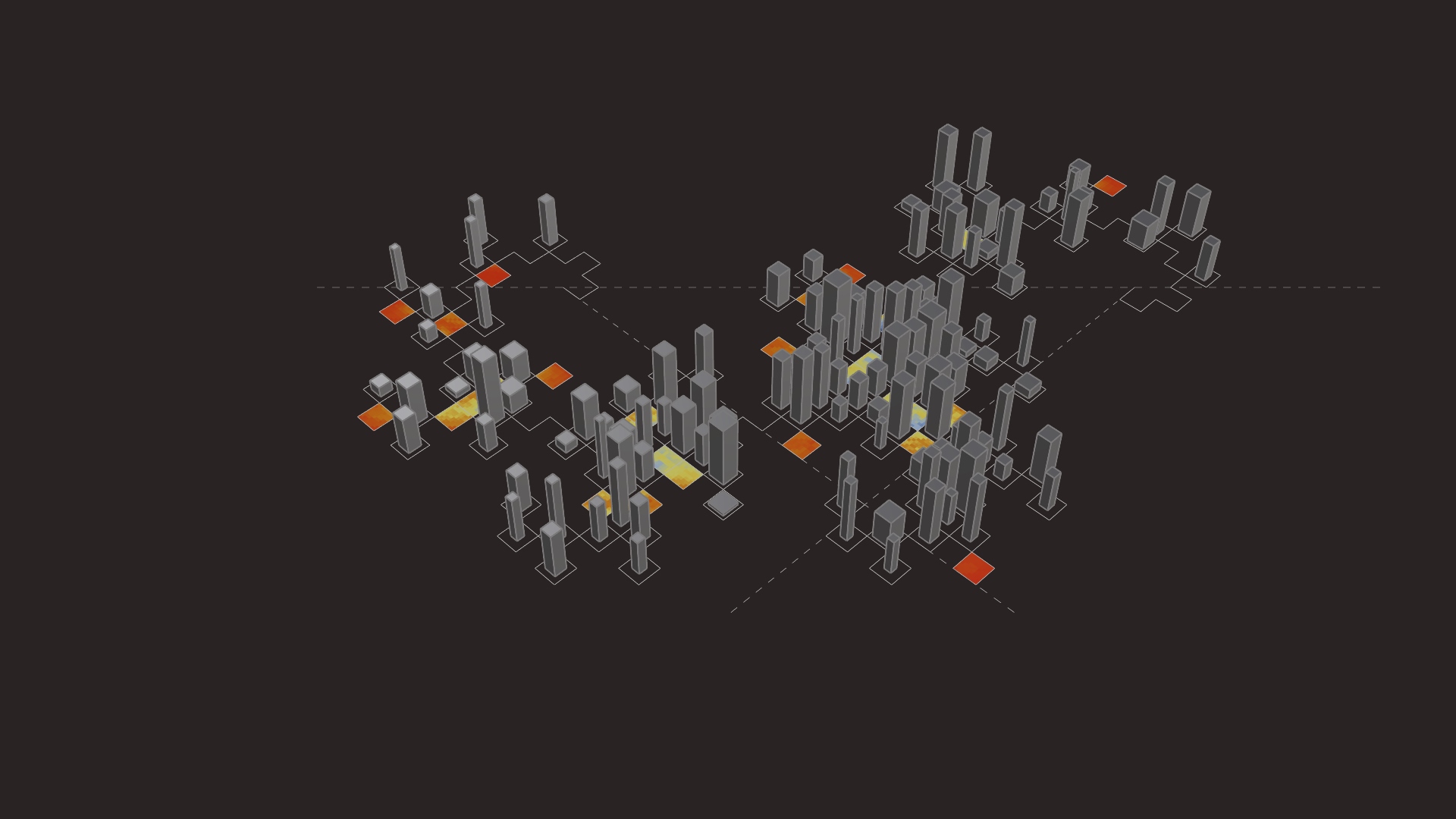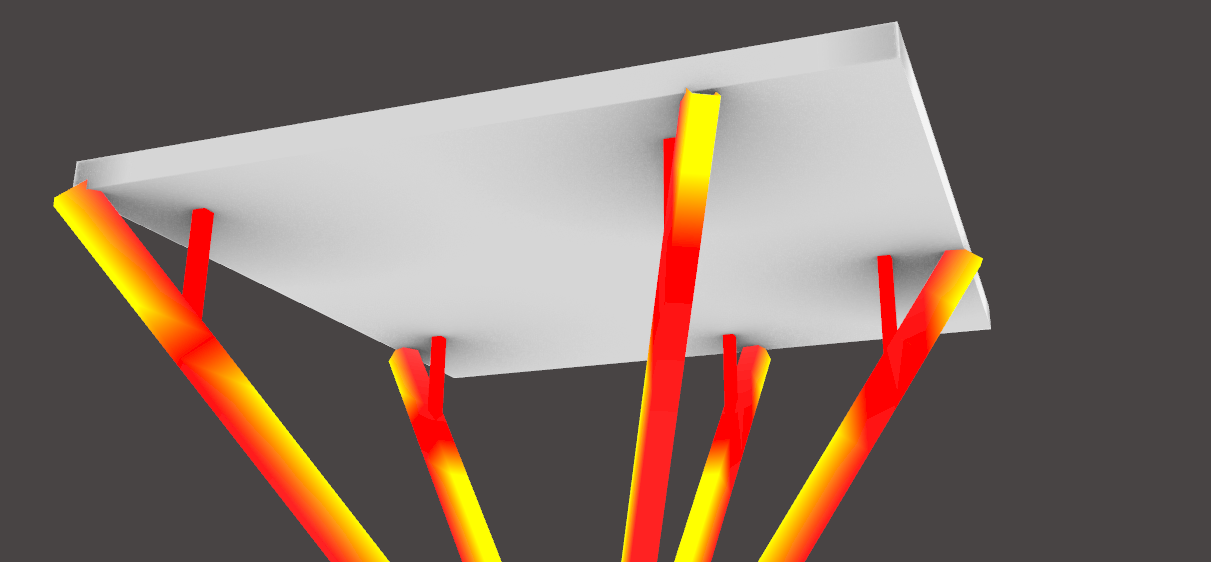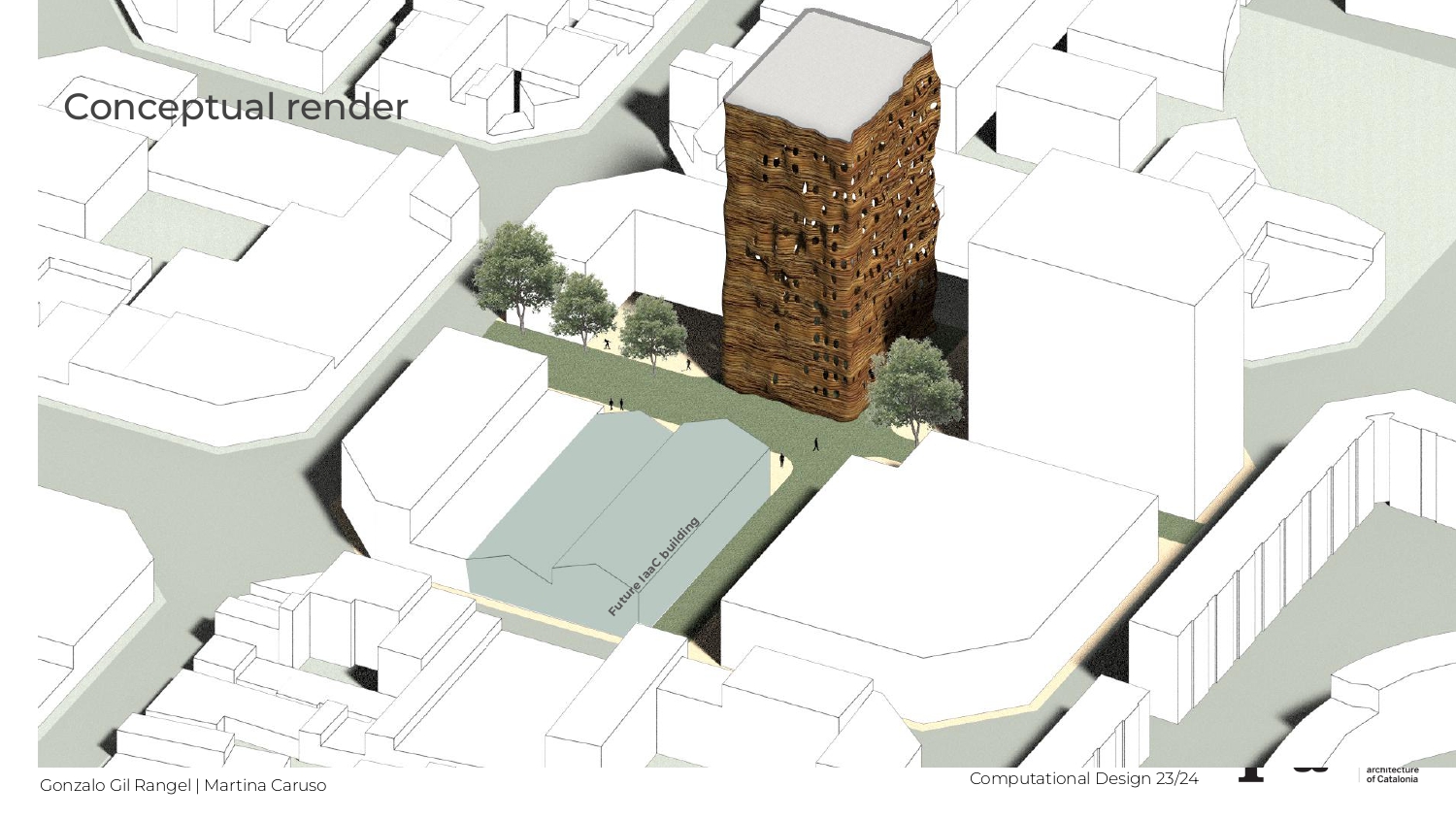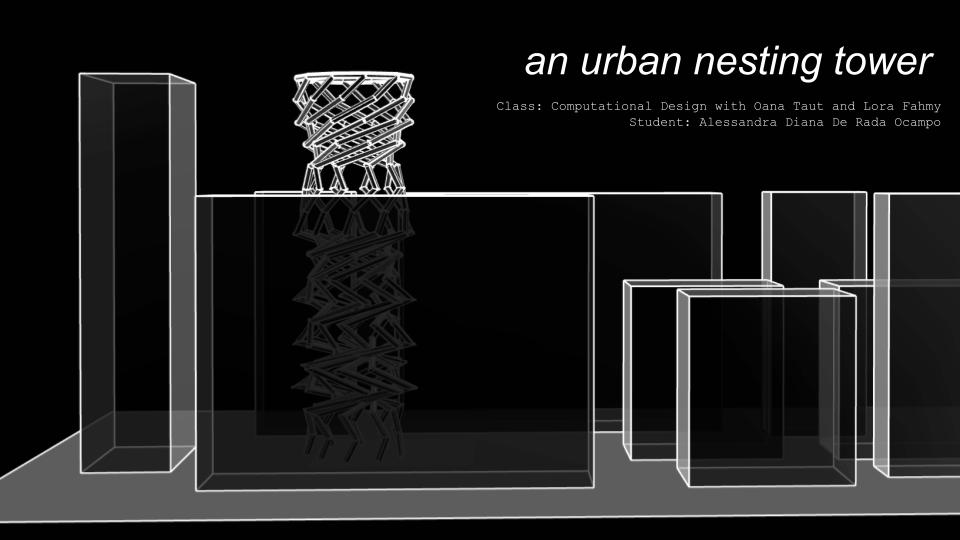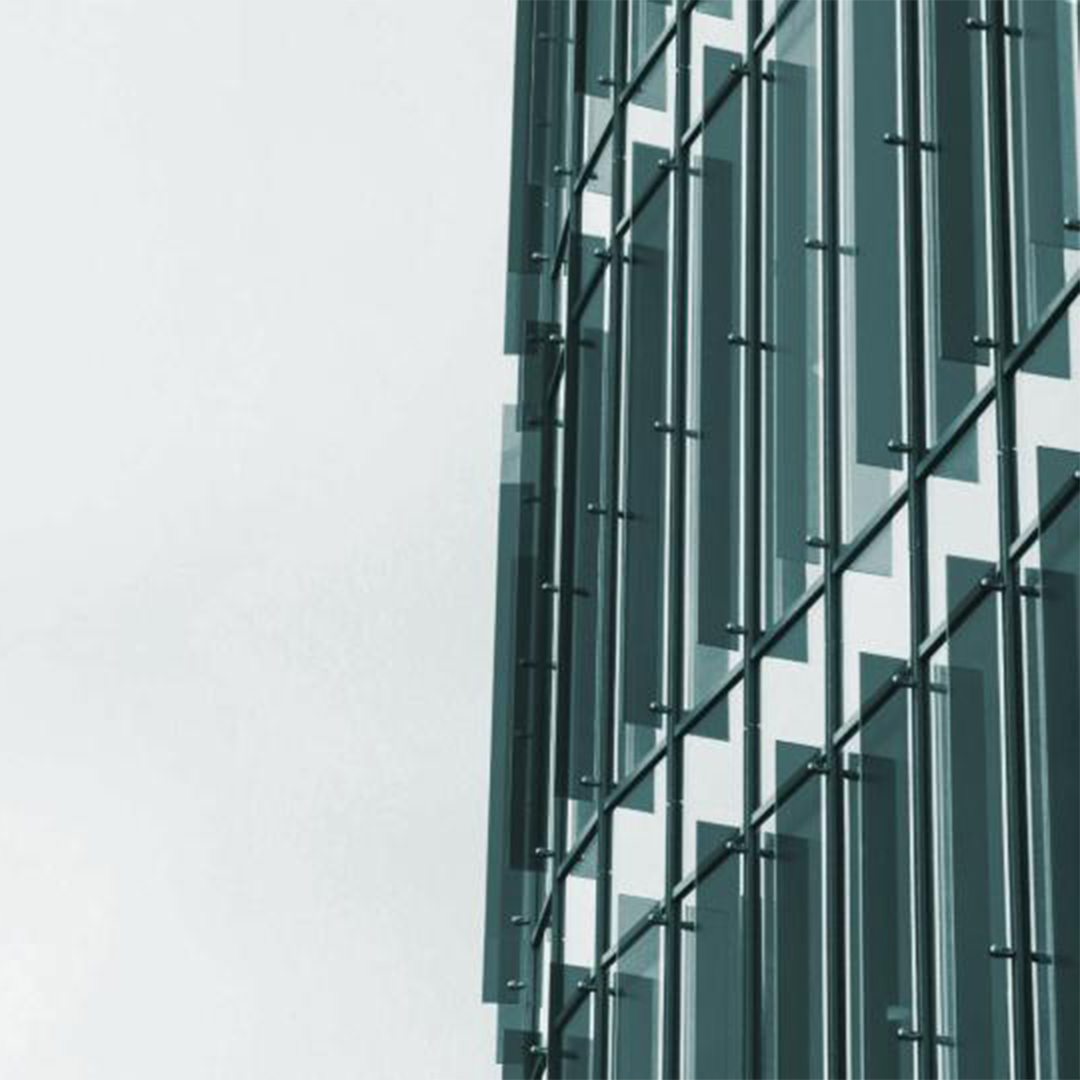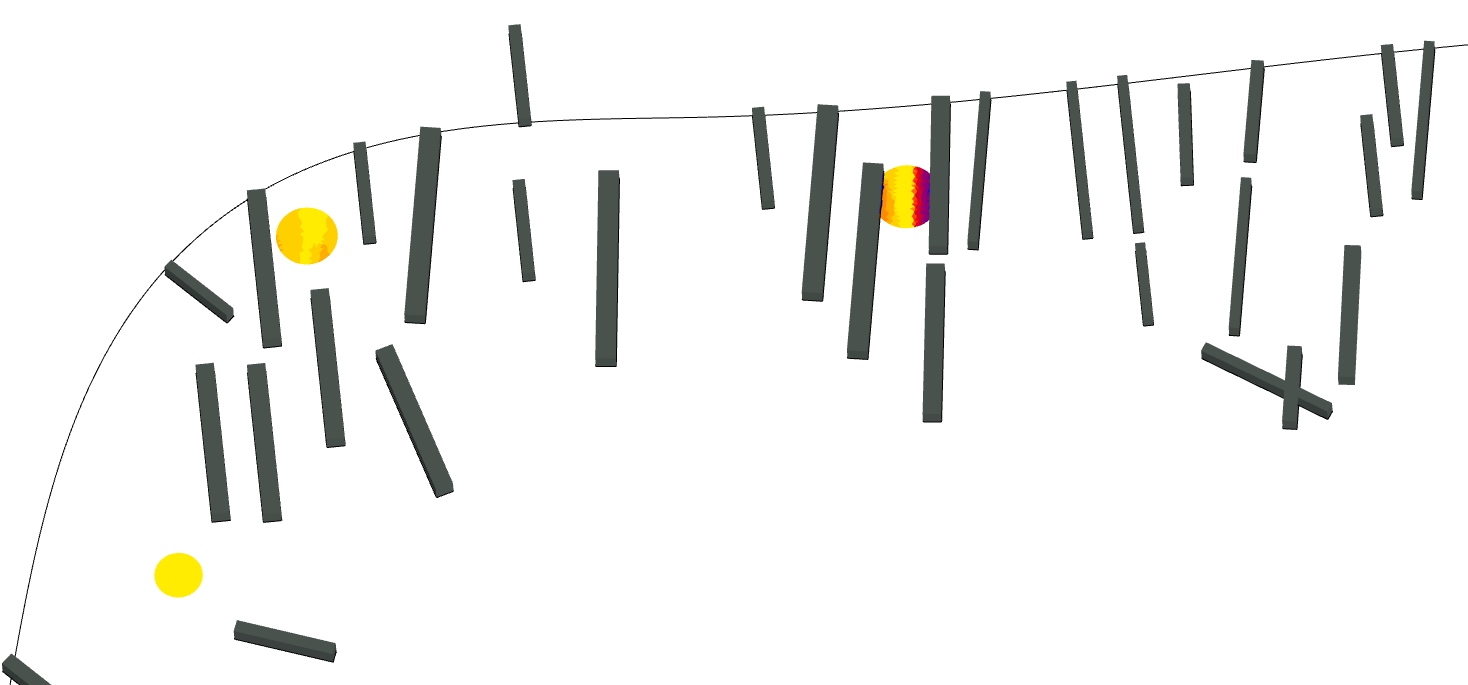Facade Frick Optimizer
manifesto This project focuses on designing manufacturing protocols for integrating CDW-Brick in architectural applications, by programming a geopolymer material system, with controlled porosity and density. The goal is to develop functionally graded elements that respond to building performances (lightweightness, thermal insulation, etc) while acting as decarbonization tools of the building industry. The design process of … Read more
Karambug
Design optimization strategy of a garage in London based on Karamba and Ladybug Sensitivity Analysis Total (average) fitness iterations Catalogues load distribution in ceiling in different iterations
WOOD ID mockups
Site The city of Porto Alegre in Brazil has faced recently the largest flood in the recorded history. The 2nd place happened 80 years ago across the span of 22 days. This year, this record was broken in 4 hours. As for now, only for the city of Porto Alegre, more than 242 thousand homes … Read more
PHYLLOTACTIC TOWER
PHYLLOTAXIS The arrangement of leaves or floral parts around a stem or axis is called phyllotaxis. The term comes from the Greek phullon – ‘leaf’ and taxis – ‘arrangement’. The model was first proposed by Wilhelm Hofmeister in 1868. IMPORTANCE: The objective of the phyllotaxis is to avoid overcrowding. So that all leaves get maximum … Read more
Performative Design – optimizing the Anthropocene Computational Design III – final assignment
_performative design Optimization : “The action of making the best or most effective use of a situation or resource.” Design optimization: “The process of finding the best design parameters that satisfy project requirements.” Design Objective: Design an optimized dense urban occupation plan that follows a fractal pattern grid. Optimization Goals of the project: _designing the … Read more
Optimization Tree Branching Fractals within Structure
Fractals are commonly found within nature. They are self-similar structures, where one aspect of the fractile is identical to the rest. This allows it to be scaled up or down while fitting within itself. Within trees, fractalization is found in the way the branches are grown from each other, always yielding smaller and smaller versions … Read more
TerraSol
Before creating a whole facade on four faces of a building, we experimented on one wall, parameterizing only the Mesh Vertex Offsets and Perforation Sizes
OPTIMIZED WELLNESS
harnessing genetic algorithms for better living In a neighborhood where high-rise buildings are becoming more prevalent, can we still prioritize and design for wellbeing? In an exploration of the interplay between architecture, the environment and human wellbeing, this project utilizes genetic algorithms to optimize the design of mixed-use residential towers, based on key environmental factors … Read more
Gardens of Tempelhof
Project Objective: Provide sustainable urban regeneration, and equal access to public spaces in dense cities, and create sunlit gardens while providing shade on the ground floor for public squares and corridors. Project Goals: •Maximizing sunlight exposure on gardens •Maximizing green space •Finding the optimized height with respect to the views. •Creating pocket gardens in between … Read more
The Rippled Facade
Optimizing the building skin inspired by Rippled droplets Meta balls as an isomorphic surfaces constructed as composite assemblages of the mutually infecting parametric objects with internal forces of mass and attraction.region of influence,which could be additive (positive) or subjective(negative)Isomorphic architecture(Bubble) Blobitecture , blobism and blobism are terms for a movement in architecture in which buildings … Read more

